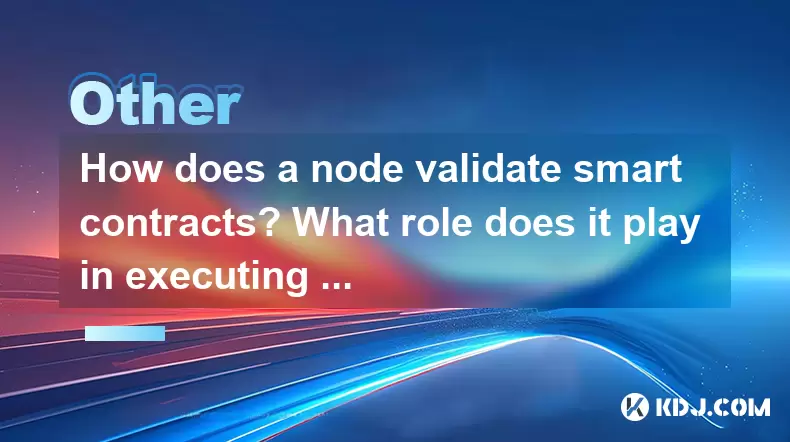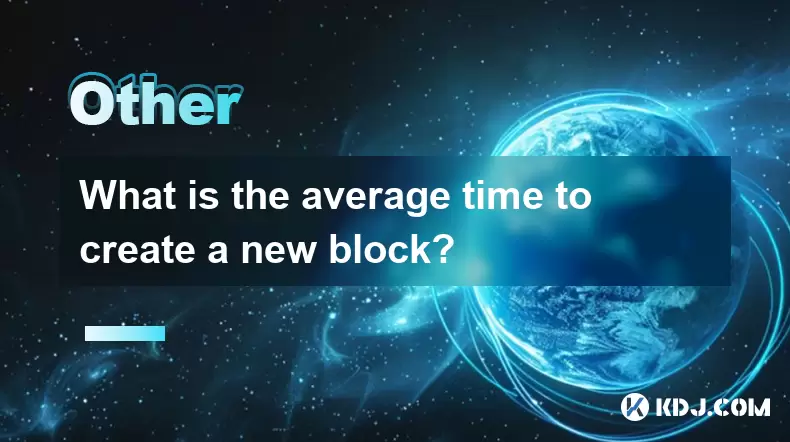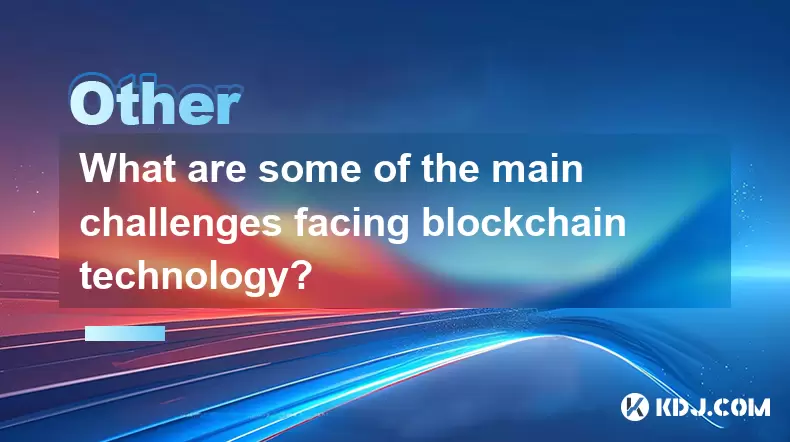-
 Bitcoin
Bitcoin $117500
2.15% -
 Ethereum
Ethereum $3911
6.19% -
 XRP
XRP $3.316
10.79% -
 Tether USDt
Tether USDt $1.000
0.01% -
 BNB
BNB $787.2
2.24% -
 Solana
Solana $175.2
4.15% -
 USDC
USDC $0.9999
0.00% -
 Dogecoin
Dogecoin $0.2225
8.40% -
 TRON
TRON $0.3383
0.28% -
 Cardano
Cardano $0.7868
6.02% -
 Stellar
Stellar $0.4382
9.34% -
 Hyperliquid
Hyperliquid $40.92
7.56% -
 Sui
Sui $3.764
7.63% -
 Chainlink
Chainlink $18.48
10.66% -
 Bitcoin Cash
Bitcoin Cash $582.1
1.88% -
 Hedera
Hedera $0.2601
6.30% -
 Avalanche
Avalanche $23.33
4.94% -
 Ethena USDe
Ethena USDe $1.001
0.02% -
 Litecoin
Litecoin $122.3
2.04% -
 UNUS SED LEO
UNUS SED LEO $8.969
-0.27% -
 Toncoin
Toncoin $3.339
0.86% -
 Shiba Inu
Shiba Inu $0.00001287
4.30% -
 Uniswap
Uniswap $10.43
7.38% -
 Polkadot
Polkadot $3.861
5.08% -
 Dai
Dai $1.000
0.02% -
 Bitget Token
Bitget Token $4.513
3.41% -
 Monero
Monero $267.7
-6.18% -
 Cronos
Cronos $0.1499
4.14% -
 Pepe
Pepe $0.00001110
5.15% -
 Aave
Aave $284.9
8.28%
How does a node validate smart contracts? What role does it play in executing contracts?
Nodes validate smart contracts by checking code, gas, and state, then execute them by running operations and updating the blockchain's state, ensuring network integrity.
May 16, 2025 at 04:28 pm

In the world of cryptocurrencies, particularly those that operate on blockchain networks like Ethereum, nodes play a crucial role in the validation and execution of smart contracts. A smart contract is essentially a self-executing contract with the terms of the agreement directly written into code. These contracts run on the blockchain and are automatically enforced by the network's nodes. Let's delve into how nodes validate and execute these smart contracts.
Understanding Nodes in a Blockchain Network
A node in a blockchain network is essentially a computer that participates in the network by maintaining a copy of the blockchain and validating transactions and smart contracts. There are different types of nodes, such as full nodes, light nodes, and validator nodes, each with varying levels of involvement in the network. For the purpose of this discussion, we will focus on full nodes and validator nodes, as they are primarily responsible for validating and executing smart contracts.
The Process of Validating Smart Contracts
Validating a smart contract involves checking its code to ensure it meets the network's rules and standards. This process is crucial to maintaining the integrity and security of the blockchain. Here's how a node validates a smart contract:
- Receiving the Smart Contract: When a user submits a smart contract to the blockchain, it is broadcasted to all nodes in the network.
- Verification of Code: The node checks the smart contract's code against the network's rules. This includes checking for syntax errors, ensuring the code adheres to the network's programming language (such as Solidity for Ethereum), and verifying that the contract does not contain any malicious code.
- Checking for Sufficient Gas: Smart contracts require gas, a unit of measure for the computational effort required to execute operations. The node verifies that the sender has provided enough gas to cover the execution of the smart contract.
- State Validation: The node also checks the current state of the blockchain to ensure that the smart contract's conditions can be met. This includes verifying the balances of involved parties and any other state-dependent conditions.
Once these checks are passed, the smart contract is considered valid and can move to the execution phase.
Executing Smart Contracts
After validation, the smart contract is ready for execution. Executing a smart contract involves running its code on the blockchain to fulfill its programmed conditions. Here's how nodes play a role in this process:
- Inclusion in a Block: Validated smart contracts are included in a block by miners or validators, depending on the consensus mechanism of the blockchain. For example, in Ethereum's proof-of-work system, miners compete to include transactions and smart contracts in a block.
- Running the Code: Once the block is added to the blockchain, nodes execute the smart contract's code. This involves running the operations defined in the contract, such as transferring funds, updating data, or triggering other smart contracts.
- Updating the State: As the smart contract executes, it may change the state of the blockchain. Nodes update their local copy of the blockchain to reflect these changes. For instance, if a smart contract transfers tokens from one address to another, nodes will update the balances of the involved addresses.
- Consensus and Finalization: After execution, other nodes in the network verify the results of the smart contract's execution. If a consensus is reached that the execution was correct, the changes are finalized and become a permanent part of the blockchain.
The Role of Nodes in Maintaining Network Integrity
Nodes not only validate and execute smart contracts but also play a vital role in maintaining the integrity and security of the blockchain. By running multiple nodes, the network ensures that there is no single point of failure and that the blockchain remains decentralized. Here are some ways nodes contribute to network integrity:
- Decentralization: A network with many nodes is more resistant to attacks and censorship. If a node goes offline or is compromised, the network can continue to operate without interruption.
- Consensus Mechanisms: Nodes participate in consensus mechanisms, such as proof-of-work or proof-of-stake, to agree on the state of the blockchain. This ensures that all nodes have a consistent view of the blockchain, preventing fraud and double-spending.
- Data Redundancy: Each node stores a copy of the blockchain, providing redundancy and ensuring that the data remains available even if some nodes fail.
Challenges and Considerations
While nodes are essential for the operation of smart contracts, there are challenges and considerations to keep in mind:
- Scalability: As the number of smart contracts and transactions increases, nodes may struggle to keep up with the computational demands. This can lead to slower transaction times and higher fees.
- Security: Nodes must be secured against attacks, as a compromised node can lead to the execution of malicious smart contracts. Regular updates and robust security measures are essential.
- Resource Requirements: Running a full node requires significant computational resources and storage. This can be a barrier for some users who wish to participate in the network.
FAQs
Q: Can a node reject a smart contract if it detects malicious code?
A: Yes, a node can reject a smart contract if it detects malicious code during the validation process. The node will not include the contract in a block if it fails the verification checks, preventing it from being executed on the blockchain.
Q: What happens if a smart contract runs out of gas during execution?
A: If a smart contract runs out of gas during execution, the transaction will be reverted, and any changes made by the contract will be undone. The sender will still lose the gas that was used up to the point of failure.
Q: How does a node know which version of the blockchain to use when validating and executing smart contracts?
A: Nodes use the longest valid chain rule, also known as the Nakamoto consensus, to determine which version of the blockchain to use. They will always follow the chain with the most cumulative proof-of-work or proof-of-stake, ensuring that they are working with the most up-to-date and widely accepted version of the blockchain.
Q: Can a node validate and execute smart contracts from different blockchains?
A: Typically, a node is designed to operate within a specific blockchain network and cannot validate or execute smart contracts from different blockchains. However, some projects are exploring interoperability solutions that allow nodes to interact with multiple blockchains, but these are still in the early stages of development.
Disclaimer:info@kdj.com
The information provided is not trading advice. kdj.com does not assume any responsibility for any investments made based on the information provided in this article. Cryptocurrencies are highly volatile and it is highly recommended that you invest with caution after thorough research!
If you believe that the content used on this website infringes your copyright, please contact us immediately (info@kdj.com) and we will delete it promptly.
- XRP ETF, Bitcoin ETF, and Japan: A New Era for Crypto Investing?
- 2025-08-08 14:30:12
- Crypto, Congress, and Bills: Navigating the Regulatory Landscape in 2025
- 2025-08-08 14:30:12
- Union Jack Oil, Unused Gas, and Bitcoin: A New York Minute on UK's Crypto-Energy Play
- 2025-08-08 14:50:12
- Bitcoin Price: Bullish Flag Points to $123K Breakout?
- 2025-08-08 14:50:12
- Crypto Group's WNBA Dildo Toss: Meme Coin Mania or Just Plain Dumb?
- 2025-08-08 14:55:13
- Stablecoins, Hong Kong, and On-Chain Finance: Navigating the Regulatory Maze
- 2025-08-08 12:30:12
Related knowledge

What is the purpose of a nonce in mining?
Aug 04,2025 at 05:56pm
Understanding the Role of a Nonce in Cryptocurrency MiningIn the world of cryptocurrency mining, the term nonce stands for 'number used only once.' Th...

Can data on a blockchain be deleted?
Aug 05,2025 at 04:00am
Understanding Blockchain ImmutabilityThe core principle behind most blockchain systems is immutability, which means that once data is recorded onto th...

What is the difference between on-chain and off-chain transactions?
Aug 02,2025 at 04:22pm
Understanding On-Chain TransactionsOn-chain transactions refer to digital asset transfers that are recorded directly on a blockchain ledger. These tra...

What is the average time to create a new block?
Aug 06,2025 at 09:21pm
Understanding Block Creation in Blockchain NetworksThe average time to create a new block varies significantly depending on the specific blockchain pr...

How are blocks linked together?
Aug 04,2025 at 06:56am
Understanding the Structure of a BlockchainA blockchain is a decentralized digital ledger composed of a sequence of blocks, each containing a list of ...

What are some of the main challenges facing blockchain technology?
Aug 07,2025 at 02:58am
Scalability Constraints in Blockchain NetworksOne of the most persistent challenges in blockchain technology is scalability. As blockchain networks gr...

What is the purpose of a nonce in mining?
Aug 04,2025 at 05:56pm
Understanding the Role of a Nonce in Cryptocurrency MiningIn the world of cryptocurrency mining, the term nonce stands for 'number used only once.' Th...

Can data on a blockchain be deleted?
Aug 05,2025 at 04:00am
Understanding Blockchain ImmutabilityThe core principle behind most blockchain systems is immutability, which means that once data is recorded onto th...

What is the difference between on-chain and off-chain transactions?
Aug 02,2025 at 04:22pm
Understanding On-Chain TransactionsOn-chain transactions refer to digital asset transfers that are recorded directly on a blockchain ledger. These tra...

What is the average time to create a new block?
Aug 06,2025 at 09:21pm
Understanding Block Creation in Blockchain NetworksThe average time to create a new block varies significantly depending on the specific blockchain pr...

How are blocks linked together?
Aug 04,2025 at 06:56am
Understanding the Structure of a BlockchainA blockchain is a decentralized digital ledger composed of a sequence of blocks, each containing a list of ...

What are some of the main challenges facing blockchain technology?
Aug 07,2025 at 02:58am
Scalability Constraints in Blockchain NetworksOne of the most persistent challenges in blockchain technology is scalability. As blockchain networks gr...
See all articles

























































































